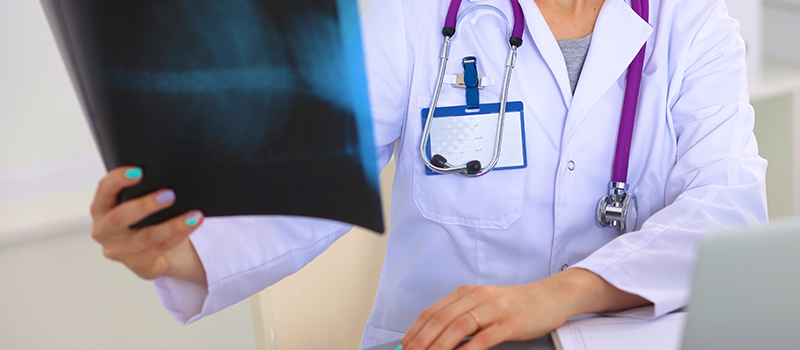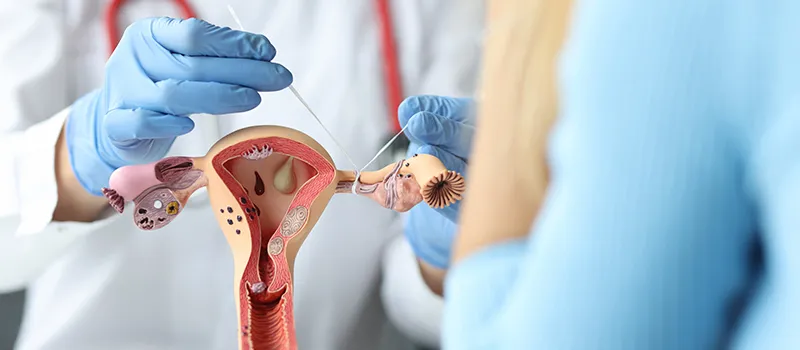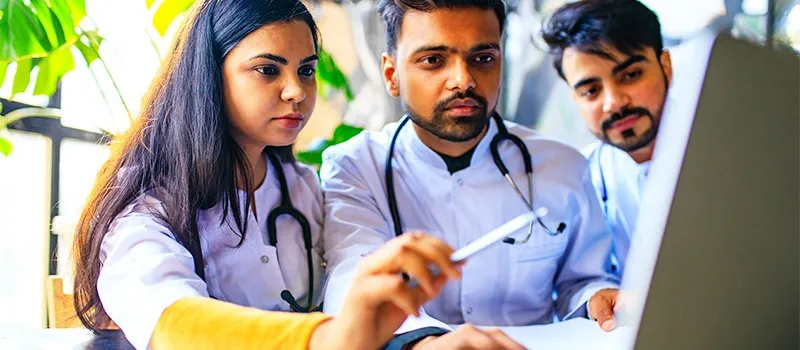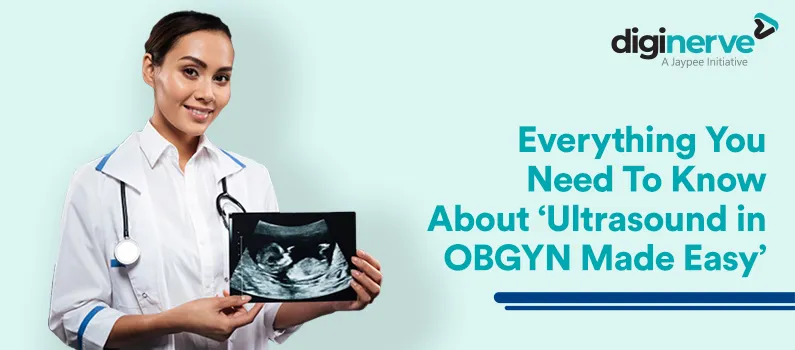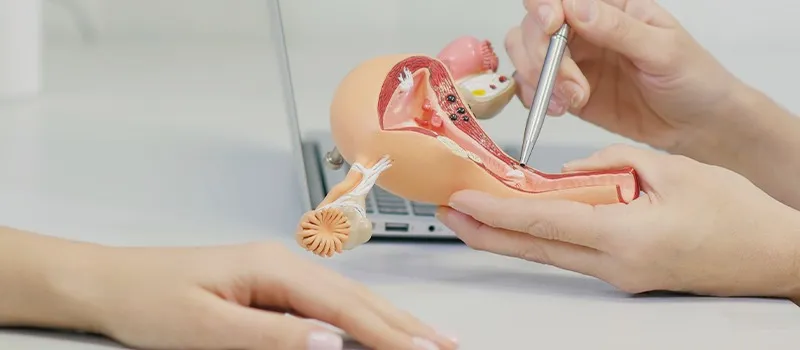

The Ultimate Guide to OBGYN MD
The 3-year MD Obstetrics & Gynecology programme focuses on the comprehensive clinical pathology of the female reproductive organs and care of both pregnant and non-pregnant patients. At the end of the first semester in the MD Obstetrics & Gynecology, students are evaluated as a unit on what they choose to do from among the available courses. As a result, an analytical topic is selected based on the student’s interests. The program’s methods for delivering instruction include conversations, presentations, in-class performances, assignments, attendance, and seminars.
The area of medicine known as obstetrics deals with the treatment of pregnant women before, during, and after childbirth. The basic goal of obstetrics is to protect and preserve a woman’s general health throughout her pregnancy. This includes pregnancy, labour, childbirth, and the postpartum period. Obstetricians can assist with labour and delivery, and do surgery. Some operate a solo or private practice where they offer their services while others provide services in a bigger healthcare facility or medical group.
On the other hand, the area of medicine dedicated to the bodies and reproductive health of women is known as gynecology. It covers reproductive system diagnosis, care, and therapy for women. This includes the fallopian tubes, ovaries, and vagina. In this area of medicine, problems with women’s breasts are also screened for and treated. Gynecology deals with women’s health through puberty and adulthood. It represents most of the reproductive care a patient receives during their lifetime.
Best Way to Study OBGYN MD
- Postgraduate students should attend lectures, seminars, symposia, departmental meetings as well as journal clubs, and interdepartmental meetings.
- They must focus on presenting their theses under ethical approval, sound clinical practice standards and acceptable research methodologies.
- In addition to brushing up on their knowledge of undergraduate studies, postgraduate students should participate in the training and instruction of interns and undergraduate students.
- They should take part in chat shows like those provided by DigiNerve’s OBGYN MD course and other forms of interactions with distinguished faculty across the country.
- They must get familiar with the latest society guidelines, benchmark trials, and recent advancements in PCOS, Robotic Surgery, etc. These can be accessed easily with DigiNerve’s OBGYN MD course by Dr. Aswath Kumar.
- Students should emphasize self-learning, group discussions, and case presentations.
- They should concentrate on taking correct notes, performing a clinical examination, recommending or ordering pertinent tests, deciphering the results, and implementing medical/surgical management in the specialty clinics, OPD, wards, labour room, and operating rooms.
- They must take down clinical notes regularly while maintaining records.
- Students should attend dummy/model demonstrations with utmost attention and dedication before performing on real patients later.
- They should attend CMEs and conferences where they can present papers.
- Postgraduate students should keep a log book during the training time that details the length of their rotations and work in wards, outpatient departments, and casualties. This should list the operations and classes they attended. They can use this to periodically assess the experience they have obtained and keep track of training-related activities.
- Students must visit the department’s clinical units during rotations including anesthesiology, neonatology, and radiology/radiotherapy. In Obstetrics & Gynecology, NST, and Partogram, students should be competent to perform and interpret ultrasonography.
DigiNerve’s OBGYN MD course by Dr. Aswath Kumar
The course is designed by the chief editor Dr. Aswath Kumar along with 98 eminent faculty. Students will benefit greatly from their accumulated knowledge of more than 500 years as they learn ideas in depth. The course covers crucial obstetrics and gynecology concepts as well as case discussions on regular and uncommon cases. The students’ practical application of concepts will be enhanced through lectures on the management of labour, abnormal labour, abnormal presentations, and medical abnormalities in pregnancy. These lectures will also give the students a road map for how to treat these conditions successfully.
In order to help PG students prepare for their university examinations, the OBGYN MD course has been created based on the question papers from the country’s numerous universities during the previous 20 years. For students looking for a master’s in gynecology or master’s in obstetrics, this course is among the best postgraduate OBGYN courses available. To meet all of the students’ learning needs, it promotes concept-based and approach-based learning. Along with case discussions on often seen as well as uncommon instances in clinical practice, it covers significant obstetrics and gynecology issues. All of the course’s topics have been carefully chosen with consideration for the postgraduate students who struggle to obtain information on them as well as frequently asked questions.
The PG students studying gynecology and obstetrics have presented their cases as part of an open discussion with the relevant professors in the course. There is a focus on getting the right clinical findings and taking the case and history in the right way. The discussion between the faculty and students has been done in a way that would assist the viewers in approaching a case with the proper differential diagnosis and developing a strategy for correct diagnosis. To familiarise the students with contemporary developments in the field, the course contains current evidence-based guidelines for the management of a variety of conditions.
The display of minimally invasive surgeries like hysteroscopy and diagnostic/operative laparoscopy has its own area. This will give students’ learning a practical orientation. They will be thrilled with the lecture on Robotic laparoscopic surgery focusing on its relevance, application, and implications in the field of obstetrics and gynecology and how it is a boon from a future perspective. The concepts will take on a whole new dimension, thanks to the in-video display of the various surgeries being carried out.
The students’ practical application of concepts will be enhanced through lectures on the management of labour, abnormal labour, abnormal presentations, and medical abnormalities in pregnancy. These lectures will also give the students a road map for how to treat these conditions successfully. The crucial diagnostic techniques and procedures, such as the use of ultrasound in gynecology and prenatal examination, have been described in detail. A complete drug chart has been supplied for rapid reference by the students with a special focus on medications, doses, and their indications/contraindications in pregnancy and labour. To help students gain a complete understanding of each topic and to prepare them for exams, the lectures are profusely illustrated with clinical and radiological pictures, as well as flowcharts, tables, and boxes, when applicable.
We have also come up with the comprehensive OBGYN MD printed notes for existing users as well as new users to enhance the learning. The key features of our two volume OBGYN MD notes include:
- Our lecture notes are comprehensive yet condensed, keeping the vital details from lectures, textbooks, and extra material while still being clear and simple to read. No more turning pages or searching through pointless information!
- The carefully designed notes feature exam-oriented material and questions from past years, assisting students in concentrating their study efforts on the most crucial subjects and improving their chances of success.
- For busy students, our lecture notes are a time-saving lifesaver. The course content will be presented in a well-organized and condensed form so that students may learn more effectively and devote more time to practise and revision.
- Our lecture notes include visual learning components like charts, graphs, and diagrams to help memory retention. This makes difficult subjects simpler to understand and recall during tests.
- We think everyone should have access to a high-quality education at an affordable price. Our cost-effective lecture notes give students a method to succeed academically without going over budget.
Table of Content – OBGYN MD by Dr. Aswath Kumar Raghu
GYNECOLOGY LECTURE
Gynecological Anatomy
Development of Female Genital System
Anatomy of Female Genital System
Course of Pelvic Ureter, Anatomical Sites Susceptible to Injury
Pelvic Floor
Internal Iliac Artery
Lymphatic Drainage of Genital Tract
Menstrual Physiology
Physiology of Menstrual Cycle – Part I
Physiology of Menstrual Cycle – Part II
Gynecological Surgery
Thromboembolism Prevention in Gynecological Surgery
Developmental Anomalies of the Genital Tract
Developmental Anomalies of Female Genital Tract – Part I
Developmental Anomalies of Female Genital Tract – Part II
Menstrual Abnormalities
Cryptomenorrhea
Turners Syndrome
Androgen Insensitivity Syndrome
Physiology of Menopause and Menopause Hormonal Therapy
Dysmenorrhea
Premenstrual Syndrome
Postmenopausal Bleeding
Abnormal Uterine Bleeding
Endometrial Hyperplasia
Hormonal Abnormalities in Gynecology
Primary Ovarian Insufficiency
Hirsutism
Adrenal Steroidogenesis and Clinical Implications
Ovarian Pathology
Ovarian Torsion
Benign Ovarian Tumors
Borderline Ovarian Tumors
Uterine Abnormalities
Endometriosis- Management of Infertility and Pain
Fibroid uterus- I
Fibroid uterus – II
Treatment of Fibroid Uterus
Reproductive Medicine
Step by Step Approach To Male Infertility
Assisted Reproductive Technologies
Recent Updates in PCOS
Physiology of Ovulation
Ovulation Induction – I
Ovulation Induction – II
Ovarian Hyperstimulation Syndrome
Pathology/Infection of the Female External Genitalia
Trichomonas Vaginitis
Bacterial Vaginosis
Vulvo-Vaginal Candidiasis
Pathologies of the Female External Genitalia
Non Neoplastic Lesions of Vulva
Pelvic Infection
Pelvic Inflammatory Disease
Pediatric Gynecology
Puberty and Precocious Puberty
Urinary Tract Abnormalities/Infections
Stress Urinary Incontinence
Urinary Incontinence
Overactive Bladder
Urodynamic Study
Genital Fistula -VVF and RVF
Malignancy of the Genital Tract
Premalignant Lesion of Cervix
HPV Vaccination: Cornerstone of Cervical Cancer Elimination in India
Fallopian Tube Carcinoma
Carcinoma Vagina
Carcinoma Vulva
Cancer Cervix Management
Minimally Invasive Surgery
Hysteroscopy
Laparoscopy
Laparoscopy Complications
Total Laparoscopic Hysterectomy
Robotic Surgery – Hype or Hope
Pregnancy Prevention
Updates on Contraception
Medical Termination of Pregnancy
Septic Abortions
Miscellaneous Topics of Gynecology
Radiation Therapy in the Management of Gynecological Malignancies
USG in Gynecology
OBSTETRICS LECTURE
Obstetric Anatomy, Physiology, and Embryology
Maternal Pelvis and Fetal Skull
Physiology of Lactation
Ovarian Steroidogenesis
Fetal Circulation
Antenatal Assessment
Antepartum Fetal Surveillance
Doppler in FGR
First Trimester USS
Second Trimester Ultrasound
Invasive and Non-Invasive Prenatal Diagnosis
Non Invasive Prenatal Testing
Chorionic Villus Sampling
Amniocentesis
Screening of Down Syndrome
Preconceptional Counseling
Complications of Pregnancy
Preterm Labor Prevention, Diagnosis and Management
Gestational Trophoblastic Disease and Gestational Trophoblastic Neoplasia
Gestational Trophoblastic Neoplasia
Abortions
Recurrent Pregnancy Loss – Practical approach
Management of Twin Pregnancy
Monochorionic Twins Surveillance, Complications, Management
Abruptio Placentae
Placenta Previa
Placenta Accreta Spectrum
Vasa Previa
Prediction and Management of Intra Uterine Fetal Growth Restrictions
HELLP Syndrome
Antihypertensives in Preeclampsia
Cervical Incompetence
Post Term Pregnancy
Abnormal Presentation
Malpresentations Breech Presentation
Transverse Lie
Face and Brow Presentation
Occipito Posterior Position
Deep Transverse Arrest
Medical Disorders in Pregnancy
SLE in Pregnancy
Liver Disorders in Pregnancy – Part I
Liver Disorders in Pregnancy – Part II
Thyroid Disorders in Pregnancy
Epilepsy in Pregnancy
Heart Disease in Pregnancy
Urinary Tract Infection in Pregnancy
Varicella in Pregnancy
Malaria in Pregnancy
TORCH Infection in Pregnancy
HIV in Pregnancy
Sepsis in Pregnancy: an Overview to Diagnosis and Management
COVID Complicating Pregnancy
Labor (Normal and Abnormal)
Mechanism of Labor
Induction of Labor
Premature Rupture of Membrane
External Cephalic Version
Monitoring during Labor
Partogram
Intrapartum Fetal Surveillance
Operative Delivery
Instrumental Deliveries – Dying art
Third Stage of Labor and its Complications
Retained Placenta
Postpartum Hemorrhage
Puerperium and its Complications
Normal Puerperium
Baby Friendly Hospital Initiative
Pulmonary Edema in Pregnancy
Thromboembolism in Pregnancy
Peripartum Cardiomyopathy
Psychiatric Disorders in Pregnancy
Obstetric Emergencies
Shoulder Dystocia
Cord Prolapse
Obstructed Labor
DIC in Pregnancy
Obstetric Hysterectomy
Rupture Uterus
Amniotic Fluid Embolism
Safe Motherhood/Epidemiology of Obstetrics
Maternal Mortality
Miscellaneous Topics during Antepartum and Intrapartum Period
Immunization in Pregnancy
Nutrition in Pregnancy
Labor Analgesia
Hyperemesis Gravidarum
Pharmacotherapeutics in Obstetrics
Drugs in Obstetrics and Gynecology
Disease of the Fetus and Newborn
Neonatal Resuscitation
Miscellaneous Topics of Obstetrics
Role of Genetics in Obstetric Practice
GYNECOLOGY CASE DISCUSSION
Primary Amenorrhea
Secondary Amenorrhea
Abnormal Uterine Bleeding
Fibroid uterus
Pelvic Organ Prolapse
Endometriosis
Adenomyosis
Infertility
Carcinoma Cervix
Endometrial Carcinoma
Carcinoma Ovary
OBSTETRICS CASE DISCUSSIONS
Antepartum Hemorrhage
Rh Negative Pregnancy
Recurrent Pregnancy Loss – I
Recurrent Pregnancy Loss – II
Twin Pregnancy
Fetal Growth Restriction
Hypertension in Pregnancy
Ectopic Pregnancy
Anemia in Pregnancy
Gestational Diabetes Mellitus
Cephalopelvic Disproportion
Previous Cesarean Section
Breech Presentation
Gestational Trophoblastic Neoplasia
Scope of OBGYN after PG
- Maternal-fetal medicine specialists
High-risk pregnancies are managed by specialists in maternal-fetal medicine. They focus on the woman and baby’s health and may also manage challenging or high-risk deliveries like breech delivery.
- Reproductive endocrinologists
They are infertility specialists. They identify infertility issues and create treatment strategies. Several provide In-Vitro fertilisation (IVF) treatments.
- Gynecologic oncologists
A doctor who focuses on treating cancer is known as an oncologist in medicine. Ovarian and cervical cancer are two examples of the cancers that gynecological oncologists treat.
- Female pelvic specialists
Specialists in female pelvic medicine and reconstructive surgery concentrate on diseases and injuries of the pelvic floor and adjacent structures. They could conduct surgery to fix prolapsed pelvic organs, address incontinence, or offer pelvic floor physical therapy.
FAQs
Q1. Who is an obstetrician-gynecologist?
Ans. An obstetrician-gynecologist is an expert in pregnancy and childbirth as well as female reproductive health. Some provide a broad range of general medical treatments, much like a primary care physician while some concentrate on the treatment of the female reproductive system.
Q2. Can a gynecologist deliver babies?
Ans. A gynecologist is an expert in the female reproductive system; he/she does not treat pregnant patients or assist in childbirth, instead, an obstetrician delivers babies. These two branches of medicine are frequently combined by students.
Q3. Can a male be a gynecologist?
Ans. Yes, many renowned gynecologists in the country and even across the world are male.
Q4. How many years does it take to become a gynecologist?
Ans. It takes around 7.5-8 years to become a gynecologist including 5.5 yrs of MBBS and 2 yrs of MD.
Related post
Related Courses



















